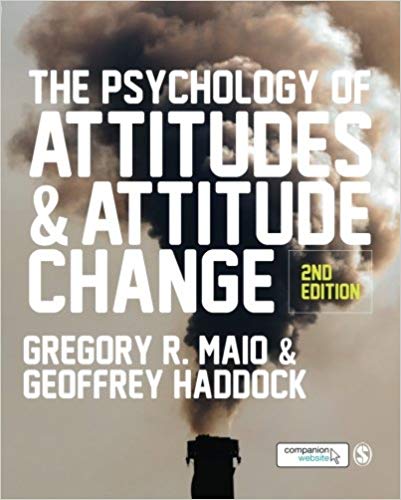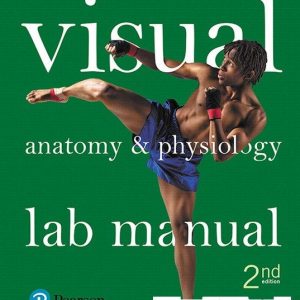Instant download Test Bank for The Psychology of Attitudes and Attitude Change Second Edition pdf docx epub after payment.

Product details:
- ISBN-10 : 1446272265
- ISBN-13 : 978-1446272268
- Author: Gregory R. Maio; Geoff Haddock
In the 2nd Edition, Greg Maio and Geoffrey Haddock expand on how scientific methods have been used to better understand attitudes and how they change, with updates to reflect the most recent findings. With the aid of a few helpful metaphors, the text provides readers with a grasp of the fundamental concepts for understanding attitudes and an appreciation of the scientific challenges that lay ahead. With plenty of learning aids to help with revision and a new companion website, this textbook is a valuable resource for anyone interested in learning or teaching about attitudes.
Table of contents:
- Chapter 1 What is an attitude and why is it important?
- What is an attitude?
- Why do people have attitudes?
- Organisation of knowledge, and regulating approach and avoidance
- Higher psychological needs
- Inter-individual differences and multiple functions
- Research applying attitude functions
- Why study attitudes?
- Overview of the book
- Chapter summary
- Exercises
- Further reading
- PART I GATEWAYS TO OUR ATTITUDES
- Chapter 2 Asking for attitudes: not that simple after all
- The concept of measurement
- How do we know if the measurement is good?
- Reliability
- Validity
- Direct measurement
- The question–answering processes
- Instruments for direct attitude measurement
- Motivated response distortions and how to deal with them
- Concluding comment: if the best self-report is not good enough
- Chapter summary
- Exercises
- Further reading
- Chapter 3 Beyond asking for attitudes: from indirect measures to implicit attitudes
- Assessing evaluation without asking for it
- Attitudes expressed in everyday behaviour
- Attitudes expressed in non-attitudinal judgements
- Attitudes expressed in involuntary behaviours
- Attitudes expressed in physiological reactions
- Attitudes in time: reaction time measures
- How good are reaction time measures?
- From different measures to different constructs – and back
- Concluding comment: choosing the appropriate measure
- Chapter summary
- Exercises
- Further reading
- PART II THE ORIGINS OF OUR ATTITUDES
- Chapter 4 From incidental sensations and needs to attitudes
- Processing fluency
- Affective states
- Mood’s informational value: a question of expectations
- Bodily states
- Appraisal of bodily sensations
- Goals and needs
- Concluding comment: sensation and adaptation
- Chapter summary
- Exercises
- Further reading
- Chapter 5 Attitude conditioning: how objects become linked with valence
- Attitudes may be conditioned: the classic approaches
- Learning does not guarantee correct attitudes
- Evaluative Conditioning (EC)
- EC vs. Pavlonian conditioning
- Underlying mental processes
- Unaware EC
- How to skin the EC cat?
- Concluding comment: from nature to nurture
- Chapter summary
- Exercises
- Further reading
- Chapter 6 Malleable attitudes: between stored representations and context-dependent constructions
- Information retrieval for attitude construction: what comes to mind
- Weighting
- How the judgement is put together
- Beyond accessibility: the appropriateness of information may moderate its impact on judgement
- Standards of comparison
- Constructing attitudes or constructing judgements?
- The Motivation and Opportunity as DEterminants Model (MODE)
- Concluding comment: temporary construction versus stable representation
- Chapter summary
- Exercises
- Further reading
- Chapter 7 Attitudes: a question of good balance
- Attitude consistency
- Theory of cognitive dissonance
- Do people unconsciously strive for consistent attitude structures?
- The consistency principle in implicit measures
- Balanced Identity Theory
- The Associative-Propositional Evaluation Model
- Concluding comment: consistent capuchins and associative apes
- Chapter summary
- Exercises
- Further reading
- PART III THE SOCIAL NATURE OF ATTITUDE CHANGE
- Chapter 8 Persuasion: making others like what you want them to like
- Message reception and transformation
- The cognitive response approach
- Dual-process models of persuasion
- The Elaboration-Likelihood Model (ELM)
- Which route does one take?
- Multiple roles of persuasion variables
- The Heuristic-Systematic Model (HSM)
- The low-effort mode: heuristic processing
- Interplay of processing modes: the co-occurrence hypotheses
- Dual-process models: some open questions
- What is a strong argument?
- How many routes does persuasion take?
- Concluding comment: a revolution nevertheless
- Chapter summary
- Exercises
- Further reading
- Chapter 9 Social influence on our attitudes
- Attitudes acquired through social influence
- Moderators of social influence
- Number
- Strength of the influence
- Immediacy
- From individual attitudes to public opinion
- Dynamic Theory of Social Impact
- Group polarisation (and group consensus)
- The majority always wins?
- Consistency (persistence and unanimity)
- Other moderators of minority influence
- Why do majorities change?
- Concluding comment: persuasion as a social process
- Chapter summary
- Exercises
- Further reading
- Chapter 10 Resistance: stubborn receivers and how to persuade them
- What motivates us to resist persuasion?
- What makes an attitude resistant to change?
- Inoculation Theory
- Explaining resistance with indicators of attitude strength
- Argument elaboration
- Certainty does not need arguments
- Inferring attitude certainty from resistance
- Explaining resistance with social inferences
- Receivers have persuasion knowledge, at least a bit
- The arms race: active persuaders versus active receivers
- Concluding comment: knowing the receiver
- Chapter summary
- Exercises
- Further reading
People also search:
The Psychology of Attitudes and Attitude Change Second Edition
The Psychology of Attitudes and Attitude Change Second Edition pdf
The Psychology of Attitudes and Attitude Change
|
what is attitude change in social psychology |





